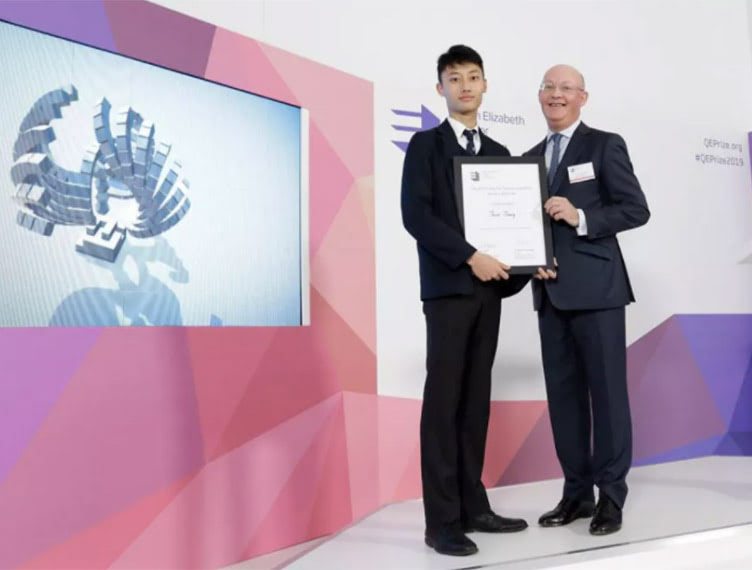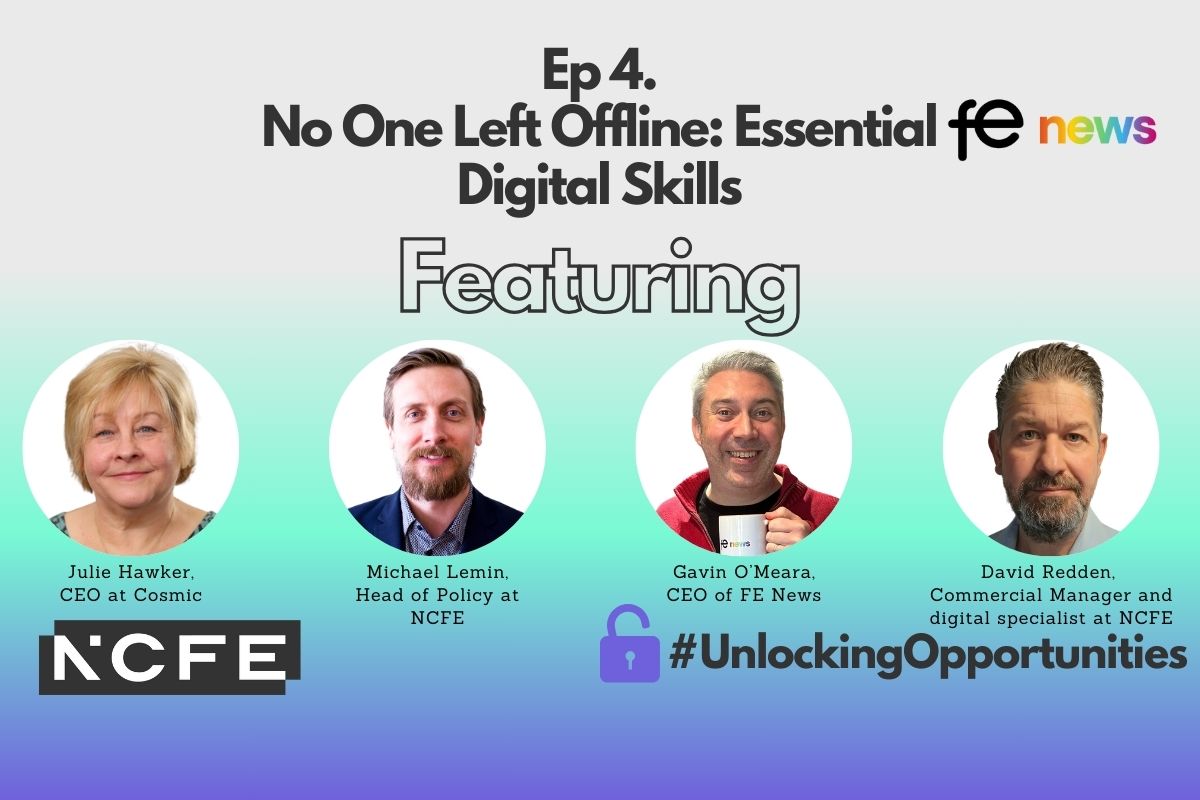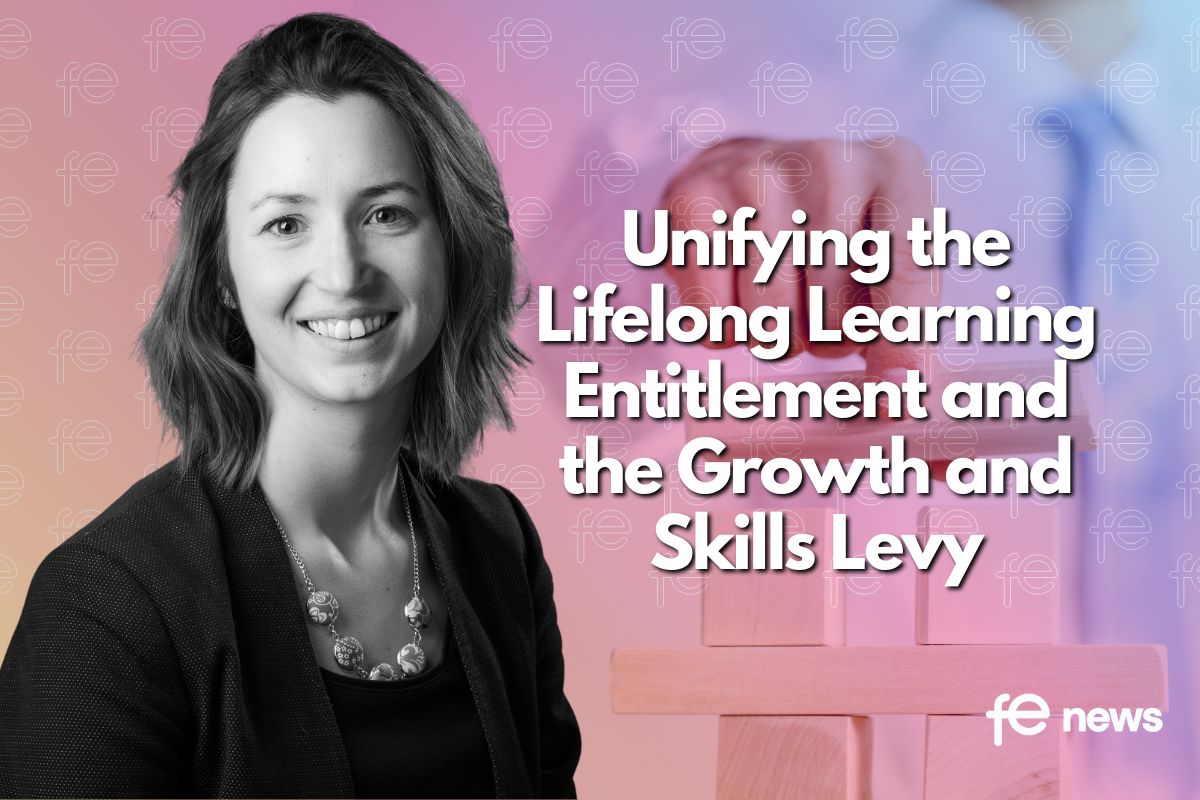Queen Elizabeth Prize for Engineering Foundation (QEPrize)’s Create the Trophy competition invites budding young designers from around the world to construct innovative trophies

#QEPrize opens entries for international design competition: Create the Trophy
Today (23 Sept) the Queen Elizabeth Prize for Engineering Foundation (QEPrize) opens the Create the Trophy competition around the world to young people aged between 14 and 24. The competition, now in its fifth iteration, invites budding designers to construct innovative trophies that capture the essence, creativity, and wonder of engineering.
The previous competition to design the trophy for the 2019 QEPrize winners saw an unprecedented number of entries from over 50 countries, but 16-year-old Jack Jiang from Hong Kong was crowned the overall winner after his intricate design impressed the judges with its complexity and balance. Dr Bradford Parkinson, Professor James Spilker, Hugo Fruehauf, and Richard Schwartz won the 2019 Prize for their work on the Global Positioning System (GPS) and Jack’s trophy was presented by HRH The Prince of Wales at Buckingham Palace on 3 December 2019.
The Create the Trophy competition is hosted on the newly refreshed QEPrize3D app, freely available on both iOS and Android. The app provides a library of shapes and materials for designers to create a piece of engineering history, and a photo studio helps them further stylise designs before sharing with friends. This year, to help accommodate different learning styles, users also have the option to submit photo and text explanations alongside their designs. Entrants can choose to make a sketch or model of their trophy and photograph it, or take a photograph of something that inspired their work.
The competition closes at 12pm (UTC) on Monday 21 December 2020, and an expert panel of judges will then begin to assess the submissions. The winner will be announced on 2 February 2021 along with the winners of the 2021 QEPrize.
In addition to seeing their design transformed into the finished trophy for presentation to the winners of the 2021 QEPrize, the winner will receive a state-of-the-art laptop and an invitation to the award ceremony in London, including travel and accommodation.
Lord Browne of Madingley, Chairman of the Queen Elizabeth Prize for Engineering Foundation, said:
“Engineering is fundamentally a creative discipline. Engineers take quite disparate scientific discoveries and fashion them into innovative solutions which eventually become indispensable to our daily lives. Last year’s prize-winning innovation – GPS – is a prime example. The engineers behind it built upon a set of novel technologies to create a powerful system that now benefits billions of people every day.
“The Create the Trophy competition is a showcase for creativity. It gives young people around the world the opportunity to create innovative designs that represent the profound impact of engineering on humanity.”
Sir Ian Blatchford, Director and Chief Executive of the Science Museum Group and Chair of the competition judging panel, said:
“Create the Trophy is a wonderful competition which enables young people to express their creativity, design skills and engineering application.
“The QEPrize winners are incredible figures who are respected throughout the world, and to be able to create a lasting award recognising their achievement has proved to be incredibly inspiring to our entrants. I think Create the Trophy is a marvellous opportunity to Introduce young people to the challenges and opportunities of a career in modern engineering.”
About the judging panel
Sir Ian Blatchford is chair of the judging panel and Director and Chief Executive of the Science Museum Group. The Group includes the National Railway Museum in York and Shildon; the Museum of Science & Industry; and the National Media Museum in Bradford. The Science Museum Group plays a vital role in helping to inspire the next generation of scientists and engineers, showcasing the best of British research and providing accessible and inspiring exhibitions and events for both adults and children. He was appointed a Knight Bachelor in the 2019 New Year Honours for services to Cultural Education.
Roma Agrawal is a structural engineer at AECOM. Previously, she worked as design manager at Interserve, and was a senior structural engineer on the Shard in London. Roma was awarded the ‘Diamond Award for Engineering Excellence’ by the Association for Consultancy and Engineering and ‘Young Structural Engineer of the Year’ by the Institution of Structural Engineers. Roma is an advocate of engineering, scientific, and technical careers to young people.
Roma’s message to the 2021 entrants: “My advice to young designers excited about entering the competition is to have a lot of fun. There are so many different possibilities – you can really push the boundaries of the different shapes and materials that are there.,
Zoe Laughlin is the co-founder and Director of the Institute of Making. She is an artist, maker, presenter, and materials expert exploring the engineering, science, design, and craft of ‘stuff’. She earned a PhD in Material Science in the Department of Engineering at King’s College London in 2010, and works at the interface of the science, art, craft and design of materials.
Zoe’s message to the 2021 entrants: “Think of the form itself and then think about its proportions and how it might stand and what it might stand on. Then think about what the app is wanting you to do – it wants you to make certain shapes but how can you insert yourself in that? Rather than let the tool tell you what to make, what you can tell the tool to do?”
Rebeca Ramos is an architect, designer and producer with international experience in a broad range of architectural and creative projects. She is best known for her work at Heatherwick Studios where she worked on projects including Pier 55 in New York City, USA and Google Kings Cross in London, UK.
Rebeca’s message to the 2021 entrants: “Really think about your idea and be unafraid to try different ways of achieving it. Design is not usually a one solution or one attempt process – it takes trial and error. The more you do it, the more you start understanding what the right solution for your idea might be. It doesn’t have to be the traditional trophy shape. Take inspiration from nature or something that you love and test some ideas to see what comes out of it.”











Responses